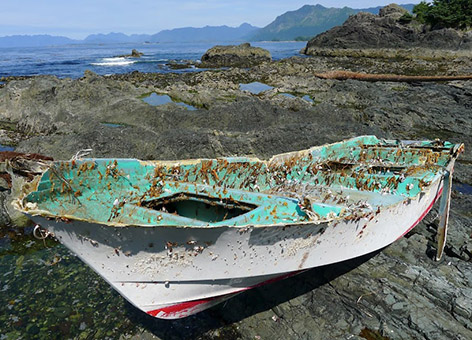

| Visitors Now: | |
| Total Visits: | |
| Total Stories: |

| Story Views | |
| Now: | |
| Last Hour: | |
| Last 24 Hours: | |
| Total: | |
Get Answers to All Your Questions about Japan Tsunami Marine Debris

The small boat which washed up on remote Spring Island, British Columbia, Canada, was positively identified as a vessel lost during the 2011 Japan tsunami. Credit: Kevin Head.
What happened to the massive amounts of debris swept into the ocean by the tsunami that inundated Japan’s coast in March 2011? How much is out there? How has the NOAA Marine Debris Program, a division of the Office of Response and Restoration, been involved?
Learn the answers to these questions and more in the following NOAA video, infographic, and documents related to Japan tsunami marine debris.
View the video on the NOAA Marine Debris Program website.
Get a visual snapshot of the issue of in our Japan tsunami marine debris infographic [PDF]. Find out at a glance about subjects including what tsunami debris has been found, NOAA efforts to model its path, and the likelihood of debris carrying invasive marine species.
Share information about tsunami debris, get tips for cleaning up beaches, and more in our handy brochure [PDF].
If you think you have found tsunami debris from Japan, read our debris handling guidelines [PDF].
Join us during our TweetChat about tsunami debris with the Office of Response and Restoration’s Marine Debris Program Director, Nancy Wallace. She will be available on Twitter to answer questions about radioactivity, floating docks, and anything else you can think of related to Japan tsunami marine debris.
- What: Use Twitter to chat with NOAA Marine Debris Program Director Nancy Wallace
- When: Wednesday, March 6, 2013 at 3:00 p.m. ET
- How: Tweet your questions to @NOAAdebris using hashtag #TsunamiDebris
Follow the conversation during or after the chat via the hashtag #TsunamiDebris on Twitter.
2013-03-06 11:00:05
Source:


